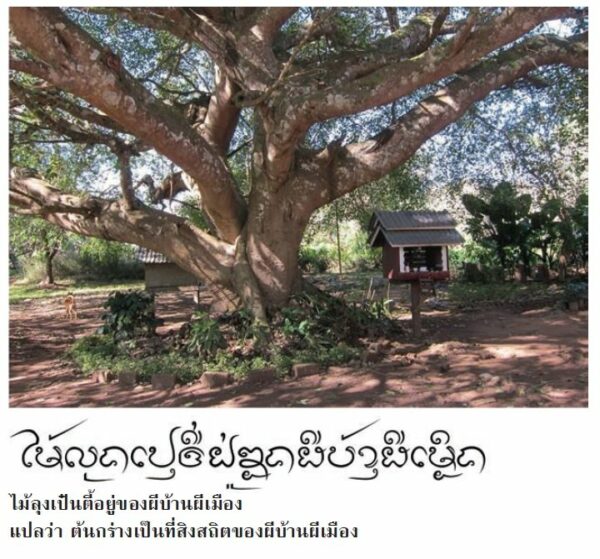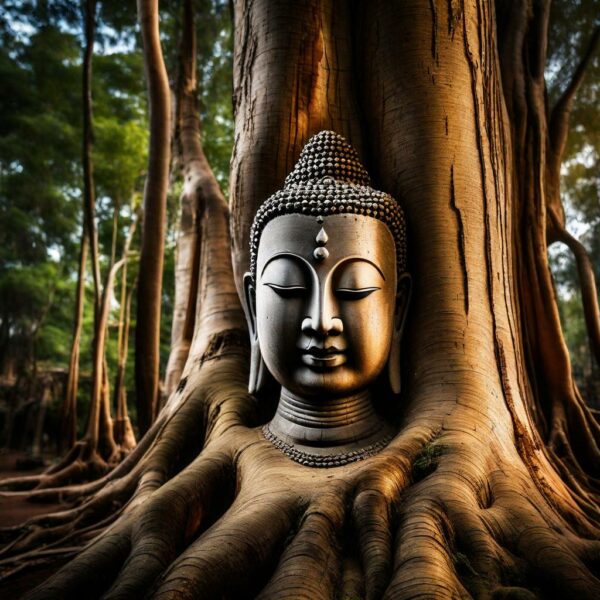Animism is a belief system that posits the existence of spirits or supernatural forces residing in natural elements, animals, and objects. In Southeast Asia, animism has deep historical roots and continues to play a significant role in the cultural and religious landscape of the region. Here are key aspects of animism in Southeast Asia:
- Diverse Animistic Traditions:
- Indigenous Beliefs: Many indigenous communities across Southeast Asia adhere to animistic traditions that are specific to their cultures. These beliefs often involve a profound connection with nature and a reverence for spirits dwelling in mountains, rivers, trees, and other natural features.
- Spirits and Deities:
- Nature Spirits: Animism in Southeast Asia involves the veneration of spirits associated with various elements of nature. These spirits are believed to influence daily life and are often appeased through rituals and offerings.
- Ancestor Spirits: Ancestor worship is a common animistic practice in the region. Ancestors are considered to be powerful spirits that can influence the well-being of the living. Rituals, ceremonies, and offerings are performed to honor and seek the guidance of ancestors.
- Shamanism and Rituals:
- Shamanic Practices: Shamans, known by different names in various cultures (such as dukun in Indonesia), play a crucial role in animistic traditions. They are believed to have the ability to communicate with spirits, mediate between the spiritual and physical realms, and conduct rituals for healing, protection, and divination.
- Rituals and Offerings: Animistic rituals often involve offerings of food, incense, and symbolic items to appease spirits and seek their favor. These rituals are performed during significant life events, agricultural activities, and to address specific concerns or challenges.
- Syncretism with Other Religions:
- Integration with Buddhism and Islam: In many Southeast Asian countries, animistic beliefs coexist with major religions such as Buddhism and Islam. There is often a syncretic blending of animistic practices with elements of these larger religious traditions.
- Cultural Expressions:
- Art and Festivals: Animistic beliefs are often expressed through art, traditional dances, and festivals. These cultural expressions celebrate the interconnectedness of humans, spirits, and the natural world.
- Conservation and Ecology:
- Environmental Stewardship: Animistic beliefs often emphasize the sacredness of nature. Some communities practice environmental stewardship, viewing the natural world as inhabited by spirits that must be respected and preserved.
- Regional Variations:
- Diversity of Beliefs: Southeast Asia is culturally diverse, and animistic beliefs vary significantly among different ethnic groups and communities. Each group may have its own pantheon of spirits, rituals, and practices.

Understanding animism in Southeast Asia requires recognizing its dynamic and diverse nature, deeply intertwined with the cultural, historical, and ecological contexts of the region.
Animism in Thai Buddhism: Where doe it Fit In?
Thai Buddhism, deeply rooted in a rich tapestry of folklore and Jātaka stories, provides a unique lens through which to explore the intersection of Buddhist teachings and animistic beliefs. One captivating Jātaka story, the “Migapotaka Jātaka” (Jātaka No. 15), unveils the Buddha’s previous life as Migapotaka, a benevolent tree spirit.
Migapotaka Jātaka: The Tale of Generosity and Selflessness
In this Jātaka, the Bodhisatta manifests as a golden goose dwelling in a tree. A king, captivated by the allure of the golden feathers, seeks to possess them. Instead of resorting to harm, the king chooses patience, deciding to wait until the goose naturally molts. Witnessing the king’s intentions, the Bodhisatta willingly sacrifices its feathers, exemplifying virtues of generosity and selflessness.

Nature Spirits in Thai Buddhism
While the Migapotaka Jātaka itself doesn’t explicitly introduce nature spirits, it provides a gateway to understanding the amalgamation of Buddhist cosmology and animistic beliefs in Thai Buddhism. Throughout Southeast Asian Buddhist traditions, animism interweaves with Buddhism, giving rise to a recognition of beings inhabiting various realms, including nature spirits associated with trees, rivers, and other elements.

Buddhist Teachings on Interconnectedness
At the heart of Buddhist teachings lies the principle of interconnectedness. The reverence for nature and all living beings is integral to Buddhist ethics. While the Jātaka stories may not explicitly detail nature spirits, they echo the broader Buddhist message of compassion, respect for life, and mindfulness of the interconnected web of existence.

IN one of the Jātaka tales, the Buddha was incarnated as a Ruglkha Tewada (Tree Deva) a spirit within a tree, sentient. This shows the belief that there are sentient spirits within the plant kingdom and apparrently inanimate things (to the human eye)
Animism’s Role in Thai Buddhism
Thai Buddhism’s incorporation of animistic elements reflects a cultural synthesis where traditional beliefs seamlessly merge with Buddhist doctrines. Animism adds layers of spiritual significance to the natural world, fostering a deepened connection between practitioners and the environment.
If we take an unbiased view of Thai Buddhism and Animism, it becomes evident that the teachings, while not explicitly focusing on nature spirits, create a framework that resonates with the intricate balance between the spiritual and the natural, which is an integral part of the cultural and spiritual traditions and beliefs, embedded in Thai Buddhism.


